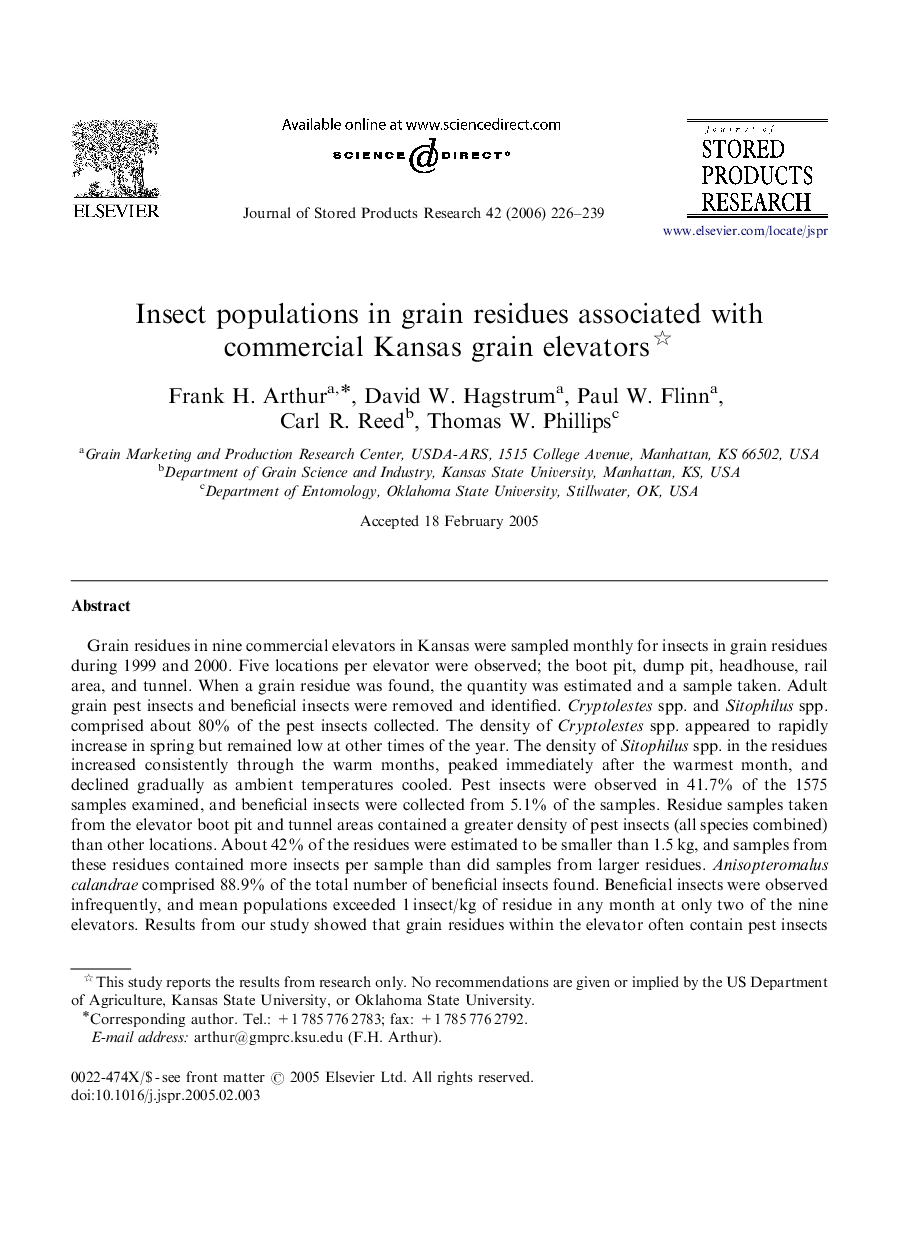| Article ID | Journal | Published Year | Pages | File Type |
|---|---|---|---|---|
| 4517627 | Journal of Stored Products Research | 2006 | 14 Pages |
Grain residues in nine commercial elevators in Kansas were sampled monthly for insects in grain residues during 1999 and 2000. Five locations per elevator were observed; the boot pit, dump pit, headhouse, rail area, and tunnel. When a grain residue was found, the quantity was estimated and a sample taken. Adult grain pest insects and beneficial insects were removed and identified. Cryptolestes spp. and Sitophilus spp. comprised about 80% of the pest insects collected. The density of Cryptolestes spp. appeared to rapidly increase in spring but remained low at other times of the year. The density of Sitophilus spp. in the residues increased consistently through the warm months, peaked immediately after the warmest month, and declined gradually as ambient temperatures cooled. Pest insects were observed in 41.7% of the 1575 samples examined, and beneficial insects were collected from 5.1% of the samples. Residue samples taken from the elevator boot pit and tunnel areas contained a greater density of pest insects (all species combined) than other locations. About 42% of the residues were estimated to be smaller than 1.5 kg, and samples from these residues contained more insects per sample than did samples from larger residues. Anisopteromalus calandrae comprised 88.9% of the total number of beneficial insects found. Beneficial insects were observed infrequently, and mean populations exceeded 1 insect/kg of residue in any month at only two of the nine elevators. Results from our study showed that grain residues within the elevator often contain pest insects and could provide food and harborage when the bins are empty, serving as sources of insect infestation for new grain.
